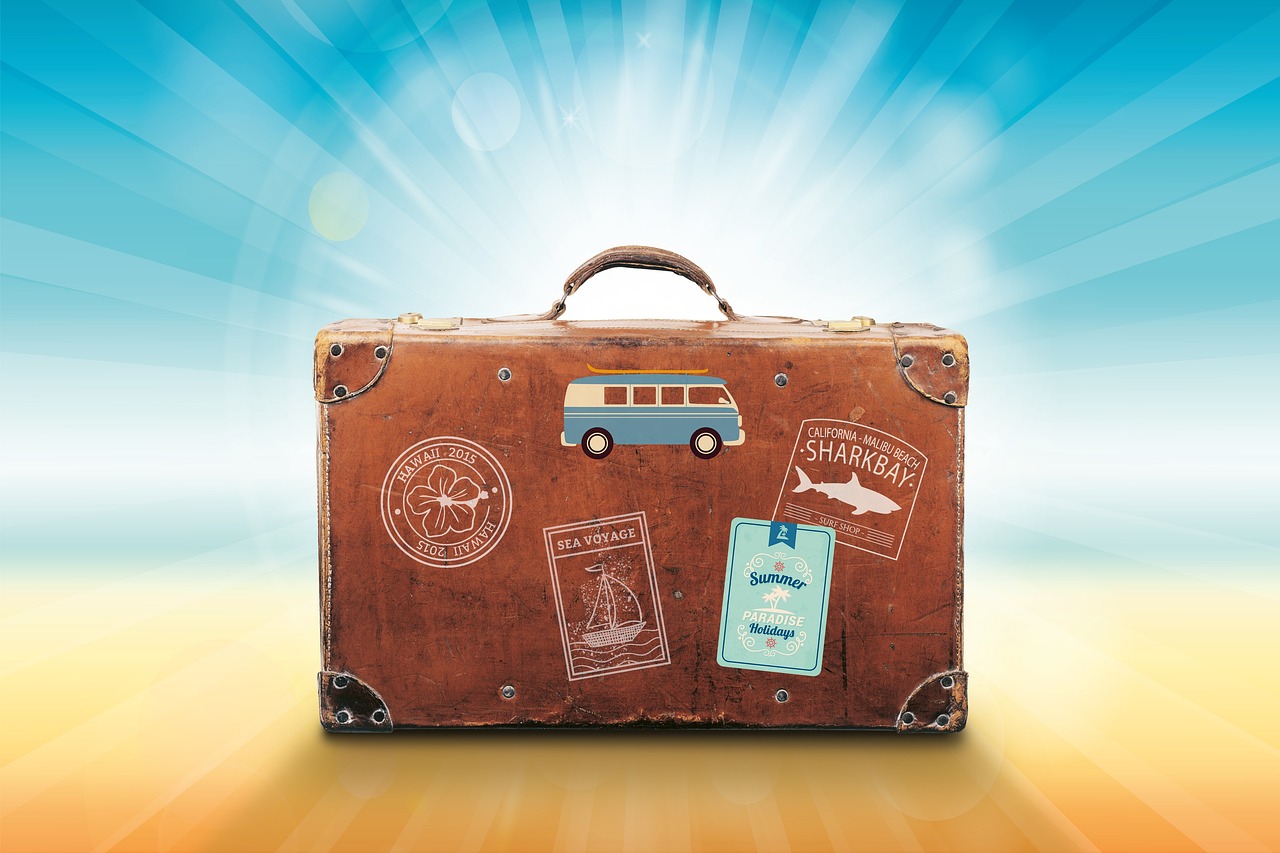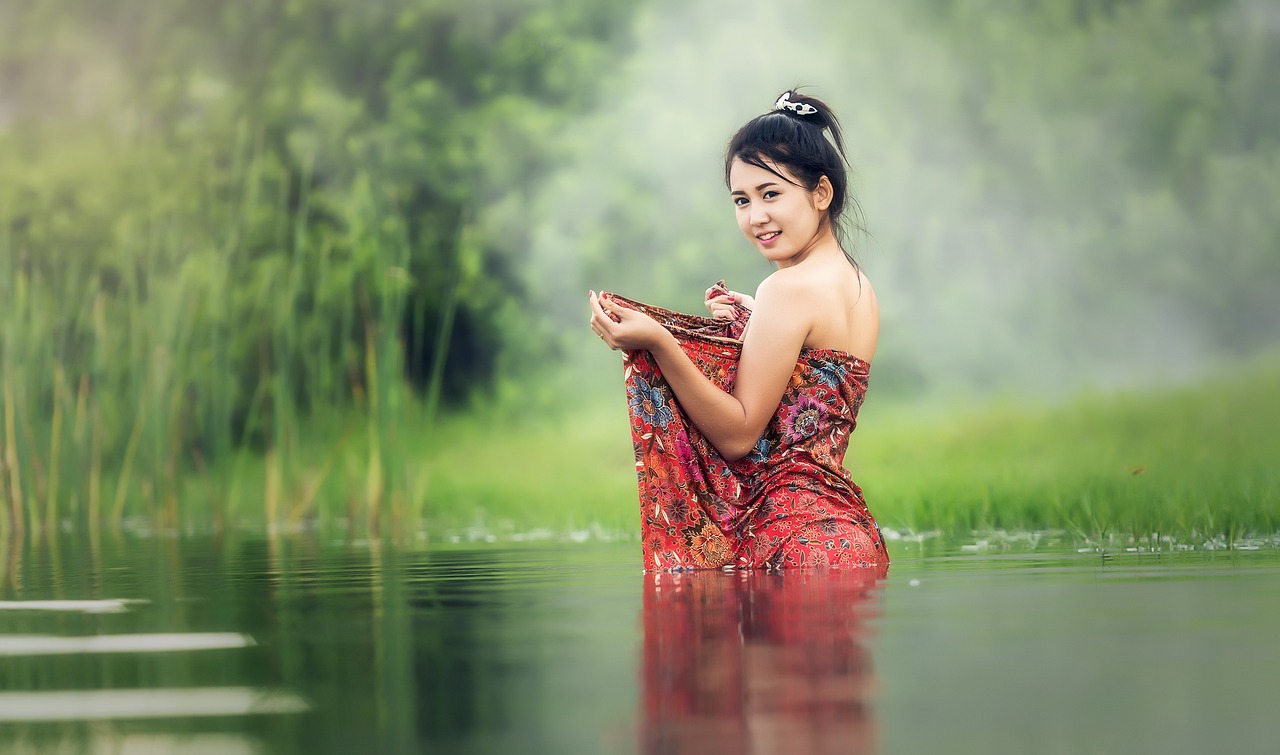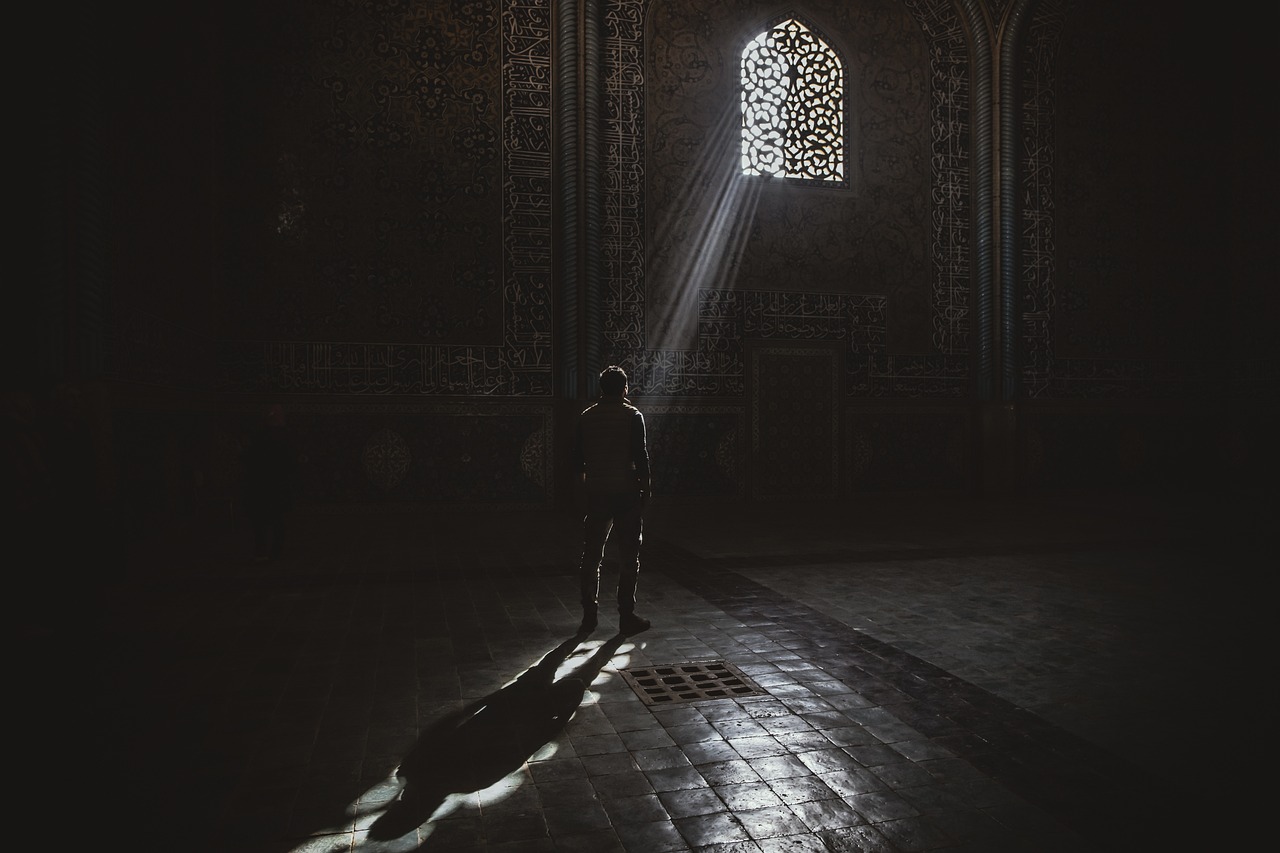How to Frame Your Travel Photos for Maximum Impact
When it comes to capturing the essence of your travels through photography, framing your shots effectively can make all the difference in creating visually stunning and impactful images. By understanding the fundamental principles of composition, utilizing natural light to your advantage, and experimenting with angles and perspectives, you can elevate your travel photos to a whole new level.
Composition is key when it comes to creating compelling travel photos. The rule of thirds, leading lines, and framing techniques can help you compose your shots in a way that draws the viewer's eye to the main subject and creates a sense of balance and harmony in your images. By paying attention to these elements, you can create photos that are not only visually appealing but also tell a story.
One of the most powerful tools at your disposal as a travel photographer is natural light. By learning how to work with the available light in different environments, you can enhance the mood and atmosphere of your photos. Whether it's the soft glow of sunrise or the warm hues of sunset, natural light can add depth and dimension to your images, making them more engaging and evocative.
Choosing the right angle can also have a significant impact on the overall look and feel of your travel photos. By exploring different perspectives and viewpoints, you can capture unique and captivating images that stand out from the crowd. Whether you're shooting from high above or getting down low to the ground, don't be afraid to experiment and push the boundaries of traditional photography.
Adding elements of local culture and traditions to your travel photos can help you create images that are not only visually striking but also rich in meaning and authenticity. By immersing yourself in the local customs and traditions of the places you visit, you can capture moments that truly reflect the spirit of the destination and create a deeper connection with your audience.
Embracing negative space in your compositions can also be a powerful way to draw attention to the main subject of your photos. By allowing empty space around your subject, you can create a sense of focus and emphasis that directs the viewer's gaze and adds a sense of drama to your images. Don't be afraid to leave room for the imagination to wander and let your subject breathe within the frame.
Post-processing plays a crucial role in enhancing the visual impact of your travel photos. By editing your images to adjust colors, contrast, and overall tone, you can bring out the beauty and vibrancy of your shots. Whether you prefer subtle adjustments or bold enhancements, editing can help you create photos that truly pop and leave a lasting impression on your audience.
Creating visual stories through a series of travel photos is a powerful way to share your journey with others. By arranging your images in a cohesive and meaningful way, you can take your viewers on a visual adventure that captures the essence of your travels and evokes emotions and memories. Think of your photos as chapters in a book, each one contributing to the larger narrative of your journey.
Finally, don't be afraid to step out of your comfort zone and experiment with different perspectives and angles. By pushing yourself to try new techniques and approaches, you can discover unique and memorable ways to capture the world around you. Whether it's shooting from unusual vantage points or playing with reflections and shadows, embracing experimentation can lead to breakthrough moments in your photography.

Understanding Composition
Tips and techniques for capturing and presenting travel photos in a way that enhances their visual appeal and storytelling potential.
When it comes to creating stunning travel photos, understanding composition is key. It's like being the conductor of a symphony, orchestrating different elements to create a harmonious visual masterpiece. One fundamental principle to grasp is the rule of thirds, where you divide your frame into thirds both horizontally and vertically, placing key elements along these lines or at their intersections. This simple technique can instantly elevate the visual interest of your photos, guiding the viewer's eye and creating a sense of balance and harmony.
Leading lines are another powerful tool in your composition toolbox. These are lines within the frame that lead the viewer's gaze towards the main subject, adding depth and guiding the narrative of your photo. Whether it's a winding road through a picturesque landscape or a row of buildings leading towards a stunning monument, these lines can create a sense of movement and intrigue, drawing the viewer deeper into the scene.
Framing is yet another composition technique that can add depth and context to your travel photos. By using natural elements like archways, windows, or tree branches to frame your subject, you create a sense of focus and draw attention to the main point of interest. It's like putting a beautiful painting in an ornate frame – it enhances and elevates the artwork, making it stand out even more.
Understanding and applying these composition techniques can transform your travel photos from ordinary snapshots to captivating works of art that tell a compelling visual story.

Utilizing Natural Light
When it comes to capturing stunning travel photos, is key to enhancing the mood and atmosphere of your shots. Natural light has a unique quality that artificial lighting simply cannot replicate. The soft, warm glow of the sun during golden hour or the dramatic shadows cast during sunset can transform an ordinary scene into a captivating image that tells a story.
One of the best ways to make the most of natural light is to pay attention to the direction and quality of light. Understanding how light interacts with your subject can help you create depth and dimension in your photos. Experiment with shooting at different times of the day to see how the angle of the sun affects the overall look of your images.
Golden hour, the period shortly after sunrise or before sunset, is a favorite among photographers for its soft, warm light that bathes everything in a magical glow. This is an ideal time to capture landscapes, portraits, and architectural details with a stunning, natural light quality.
Alternatively, harsh midday light can create strong contrasts and shadows that add drama to your photos. Embrace the harsh light by using it to your advantage, casting interesting patterns and textures on your subjects.
When shooting indoors, utilize windows and doors to let natural light flood into your scenes. Position your subject near a window to create a soft, flattering light that adds a natural and authentic feel to your travel photos.
Remember, light is a powerful storytelling tool in photography. By mastering the art of utilizing natural light, you can elevate your travel photos to a whole new level, capturing the essence and beauty of the places you visit in a way that resonates with viewers.

Selecting the Right Angle
When it comes to capturing stunning travel photos, selecting the right angle can make all the difference. The angle from which you choose to shoot can completely transform the perspective of your image, turning a mundane scene into a captivating moment frozen in time. By carefully considering your vantage point, you can create photos that are not only visually appealing but also tell a compelling story.
Imagine standing at the edge of a cliff overlooking a vast valley below. The choice of shooting from a high angle looking down can emphasize the depth and scale of the landscape, creating a sense of grandeur and awe. On the other hand, getting down low and shooting upwards can add a unique and dynamic element to your photos, drawing the viewer's eye towards the sky and creating a sense of drama.
Experimenting with different angles allows you to play with perspective and composition, giving you the opportunity to showcase the subject of your photo in a new and interesting light. Whether it's crouching down to capture a flower at eye level or climbing to a higher vantage point to photograph a bustling cityscape, each angle offers a fresh way to frame your travel experiences.
Consider how the angle of your shot can influence the mood and emotion conveyed in your photos. Shooting from a low angle can make your subject appear larger and more imposing, while shooting from a high angle can create a sense of vulnerability or intimacy. By consciously choosing your angles, you can evoke different feelings and reactions from those who view your photos.

Highlighting Local Culture
When it comes to travel photography, one of the most captivating aspects is the ability to highlight the local culture of the destinations you visit. Immersing yourself in the traditions, customs, and daily life of a place can add a rich layer of authenticity to your travel photos. By incorporating elements of local culture into your images, you not only showcase the beauty of a location but also tell a deeper story that resonates with viewers.
Imagine strolling through a bustling market in Marrakech, the vibrant colors of spices and textiles creating a feast for the eyes. By capturing the interactions between vendors and customers, the intricate patterns of handmade goods, and the expressions of people going about their daily routines, you can transport your audience to the heart of Moroccan culture.
When photographing local culture, it's essential to pay attention to the details that make a place unique. Whether it's the architecture, traditional clothing, religious ceremonies, or culinary delights, each element contributes to the tapestry of a destination's identity. By focusing on these cultural nuances, you can create images that not only document your travels but also celebrate the diversity and richness of the world.
Moreover, by engaging with locals and learning about their way of life, you can gain a deeper understanding of the communities you visit. This insight can inform your photography, allowing you to capture moments of genuine connection and authenticity. Whether it's a candid portrait of a street vendor or a snapshot of a traditional dance performance, these interactions can infuse your travel photos with a sense of intimacy and humanity.
Ultimately, highlighting local culture in your travel photos is about more than just aesthetics; it's about honoring the people, traditions, and heritage of the places you explore. By approaching your photography with curiosity, respect, and an open heart, you can create images that not only showcase the beauty of the world but also celebrate the diversity and resilience of its inhabitants.

Embracing Negative Space
When it comes to photography, sometimes less is more. Embracing negative space is a powerful technique that can elevate your travel photos to a whole new level. But what exactly is negative space? In simple terms, it is the empty or open space around the main subject of your photo. Instead of filling every inch of the frame, negative space allows the viewer's eye to focus on the key elements of the composition.
Imagine a lone traveler standing in the vast expanse of a desert, with the endless sand dunes stretching out behind them. By incorporating negative space around the traveler, you not only emphasize their presence but also convey a sense of isolation and grandeur. This technique can evoke emotions and create a more impactful visual story.
Using negative space effectively requires careful consideration of composition. Placing the main subject off-center can help balance the empty space and draw the viewer's gaze towards the focal point. It's all about finding the right harmony between the subject and the surrounding emptiness.
Furthermore, negative space can be a tool for simplification. By removing distractions and clutter from the frame, you allow the main subject to shine and command attention. This minimalist approach can result in striking and memorable travel photos that leave a lasting impression on the viewer.
Remember, negative space doesn't have to be literal empty space; it can also be created through subtle elements like a clear sky, calm water, or a plain wall. Experimenting with different ways to incorporate negative space in your travel photos can lead to unique and visually compelling results.

Editing for Impact
When it comes to making your travel photos truly stand out, editing plays a crucial role in enhancing their impact. By employing various post-processing techniques, you can elevate the colors, contrast, and overall visual appeal of your images. Whether you're adjusting the brightness and saturation levels or fine-tuning the sharpness and clarity, editing allows you to refine your photos and make them more compelling.
One effective way to enhance the impact of your travel photos through editing is by focusing on the composition. By cropping and framing your images strategically, you can draw the viewer's attention to the main subject and create a more visually dynamic composition. Additionally, experimenting with different filters and effects can help you achieve the desired mood and atmosphere in your photos, adding a unique touch to your travel memories.
Moreover, editing allows you to correct any imperfections or distractions that may detract from the overall impact of your travel photos. Whether it's removing unwanted objects, adjusting the white balance, or fine-tuning the exposure, editing tools give you the flexibility to refine your images and ensure they convey the essence of your travel experiences effectively.
Another aspect of editing for impact is paying attention to the details. By focusing on small adjustments such as sharpening the details, reducing noise, or enhancing the textures in your photos, you can bring out the intricacies and nuances that make your travel images truly captivating. These subtle enhancements can make a significant difference in how your photos are perceived and appreciated by viewers.

Creating Visual Stories
When it comes to creating visual stories with your travel photos, it's all about weaving a narrative that transports viewers to the heart of your journey. Each photo should serve as a piece of a larger puzzle, coming together to tell a compelling tale of your adventures. Think of your photos as chapters in a book, each one building upon the last to create a rich and immersive experience for your audience.
To start crafting your visual story, consider the overarching theme or message you want to convey through your photos. Are you aiming to showcase the vibrant street life of a bustling city, the serene beauty of a natural landscape, or the rich cultural heritage of a local community? By defining this central theme, you can ensure that each photo you capture contributes to the overall narrative you're trying to communicate.
One effective way to create a visual story is to establish a sense of continuity and flow between your photos. This can be achieved through consistent use of color palettes, visual motifs, or recurring elements that tie the images together. By establishing visual connections between your photos, you can guide viewers through a cohesive and engaging visual journey.
Consider the pacing and rhythm of your visual story as well. Just as a well-written novel has moments of tension, release, and resolution, your photo narrative should ebb and flow to maintain viewer interest. Experiment with varying perspectives, compositions, and subjects to create a dynamic and engaging sequence of images that keeps viewers captivated from start to finish.
Don't be afraid to get creative with the presentation of your visual story. Consider arranging your photos in a deliberate sequence to enhance the storytelling impact. Whether you opt for a chronological progression, thematic grouping, or juxtaposition of contrasting elements, the way you organize your photos can greatly influence the narrative experience for your audience.
Remember, the goal of creating visual stories with your travel photos is to evoke emotions, spark curiosity, and inspire a sense of wanderlust in your viewers. By thoughtfully curating and arranging your photos, you have the power to transport others to the places you've explored and share the magic of your travel experiences in a way that resonates deeply with them.

Experimenting with Perspectives
When it comes to capturing unique and memorable travel photos, one of the most exciting aspects is experimenting with different perspectives. By stepping out of your comfort zone and exploring new angles, you can discover fresh ways to showcase the beauty of your travel destinations. Imagine viewing a bustling market from above, capturing the vibrant colors and patterns from a bird's eye view. Or getting down low to capture the intricate details of a historic building from a unique angle. These perspectives can add a dynamic and creative touch to your travel photos, making them stand out from the crowd.
Frequently Asked Questions
- How can I improve the composition of my travel photos?
Experiment with the rule of thirds, leading lines, framing, and other composition techniques to create visually appealing and well-balanced shots. Pay attention to the placement of your main subject and background elements to enhance the overall impact of your photos.
- What is the significance of utilizing natural light in travel photography?
Natural light can greatly enhance the mood and atmosphere of your travel photos. Try to shoot during the golden hours of sunrise and sunset for soft, warm light that adds a magical touch to your images. Avoid harsh midday sun to prevent overexposure and harsh shadows.
- How can I highlight the local culture in my travel photos?
Include elements of local culture, such as traditional clothing, architecture, or daily activities, to add authenticity and depth to your photos. Engage with locals, attend cultural events, and immerse yourself in the surroundings to capture the essence of the destination.
- What role does negative space play in travel photography?
Negative space can help draw attention to the main subject in your photos by providing breathing room and emphasizing the subject's importance. Use empty spaces strategically to create a sense of balance and focus on the key elements of your composition.
- How important is post-processing in enhancing travel photos?
Post-processing can elevate the visual impact of your photos by adjusting colors, contrast, sharpness, and overall mood. Use editing tools to fine-tune your images, but remember to maintain a balance between enhancing and preserving the authenticity of the original scene.



















